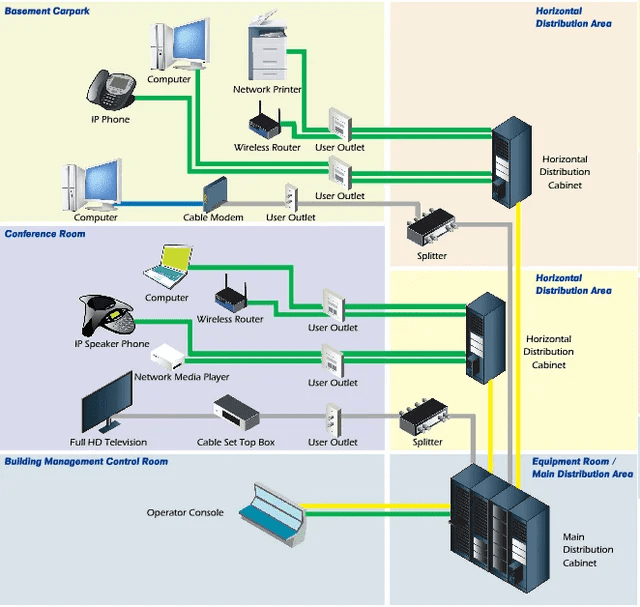
Planning Business Network Wiring
In today’s digital age, a well-planned and organized business network wiring system is essential for the smooth operation of any organization. Whether you are setting up a new office or upgrading your existing network infrastructure, proper planning is crucial to ensure efficient connectivity and minimize downtime. In this article, we will discuss the key steps involved in planning business network wiring and offer some tips for a successful implementation.
A Guide to Efficient Connectivity
The first step in planning your business network wiring is to assess your current and future connectivity needs. Consider the number of devices that will be connected to the network, such as computers, printers, and phones, as well as any future expansion plans. This will help you determine the type and quantity of network cables, switches, and routers required.
Next, it is important to create a detailed network wiring diagram. This diagram should include the layout of your office space, the location of network equipment, and the path of network cables. By visualizing the network infrastructure, you can identify potential bottlenecks or areas that may require additional wiring. It is also advisable to label all cables and equipment for easy identification and troubleshooting.
When selecting network cables, it is essential to choose the right type for your specific needs. Ethernet cables, such as Category 5e or Category 6, are commonly used for business network wiring. These cables provide high-speed data transmission and are suitable for most office environments. However, if you require faster speeds or have specific requirements, you may need to consider fiber optic cables.
Proper cable management is another crucial aspect of business network wiring. Cables should be neatly organized and secured to prevent tangling or accidental disconnection. Cable trays, conduits, and cable ties can be used to manage and route cables efficiently. This not only improves the aesthetics of your office space but also makes maintenance and troubleshooting easier.
Lastly, it is essential to test and verify your network wiring installation. This involves checking the connectivity and performance of each cable, ensuring that they are properly terminated and free from any interference. Use network testing tools to measure signal strength, verify data transmission rates, and identify any potential issues.
In conclusion, planning business network wiring is a critical step in ensuring efficient connectivity and smooth operations. By assessing your connectivity needs, creating a detailed wiring diagram, selecting the right cables, implementing proper cable management, and testing the installation, you can create a reliable and robust network infrastructure. Remember, a well-planned network wiring system not only enhances productivity but also reduces downtime and maintenance costs.

